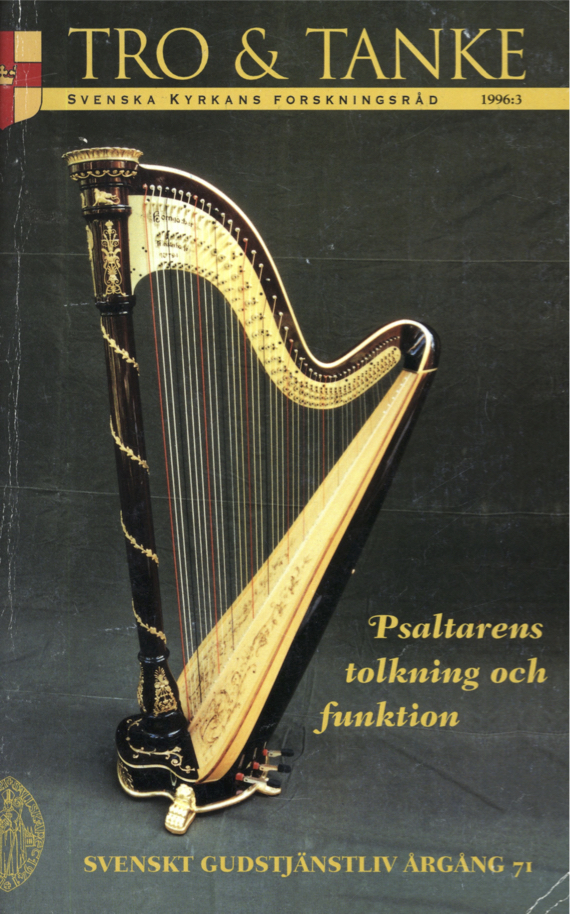Den signade dag. Tidegärden i historia och nutid
Abstract
The Swedish Roman Catholic version of the Divine Office, reformed after the Second Vatican Council (Liturgia horarum), was published in 1990 with the title Kyrkans dagliga bön (in two volumes). The idea was advanced among Lutherans and Evangelists that this book could be modified and shortened for ecumenical use. In October 1995, Tidegärden, kyrkans dagliga bön appeared with a preface signed by the Lutheran Archbishop of Uppsala, the Roman Catholic bishop of Stockholm, and the Chairman of the ”Svenska Missionsförbundet”, a mainstream Congregationalist denomination. It comprises substantially all of the de tempore material of Liturgia horarum with some minor modifications. Also, it uses the new version of the Psalter published simultaneously by the Swedish Bihle Translation Commission.
As a background of these hooks, the history of the Divine Office in Western tradition is traced: the daily prayer of the primitive Church, subsequent developments, how the ”cathedral” office was superseded by the monastic, the increasing privatization of liturgical prayer, the obligation of religious and clerics to acquit one’s daily due, and the formation of the breviary.
Some observations are made concerning the diverse fates of the Office in Anglicanism and Lutheranism, respectively. After the Reformation in Scandinavia, the Divine Office was replaced by preaching services, and even if the psalmody was retained for some time in the schools as a means of teaching Latin, the place of the Psalter was eventually taken over by hymns (which are called ”psalms” in the Nordic countries), and the hymn-book is used among Lutherans rather like the Breviary among the Catholic clergy. The traditional Office was revived in the Lutheran Church of Sweden in 1924 by private initiative, and it has been cherished by the High Church movement of this century.
Most of the essay is devoted to a rather detailed record of the formation of Liturgia horarum after Vatican II and of the successive Swedish versions. Some of the Swedish material does not correspond to a Latin original hut was created for the Office in Swedish. The Compline service (the most well-known Hour among those who pray the Office in Sweden) is richer and more varied than its Roman counterpart. The antiphons are in many instances new creations, especially the Old Testament antiphons for Magnificat in the first vespers on Sundays. The greatest challenge was to find suitable hymns, ancient and modern, for the seasons and the feast days of the year. Hymn-writing is an exacting genre, and most of that work remains to be done, in Swedish as in other languages.
Downloads
Publicerad
Nummer
Sektion
Licens
© författarna, Laurentius Petri Sällskapet för svenskt gudstjänstliv samt Artos & Norma bokförlag. Det är tillåtet att kopiera och använda material ur Svenskt Gudstjänstliv för forskningsändamål om källan anges. För övriga ändamål kontakta respektive artikelförfattare samt förlaget. Särskilda restriktioner kan gälla för bildmaterial.


